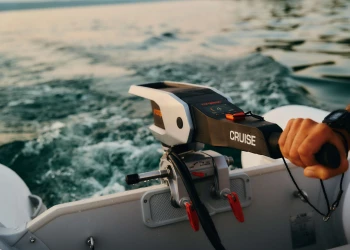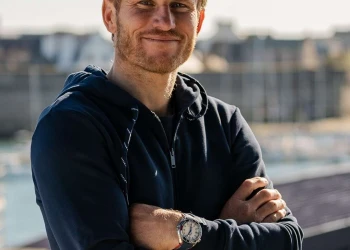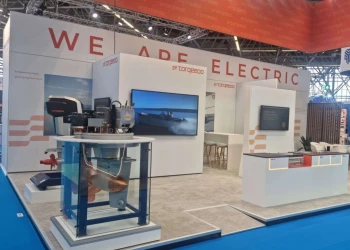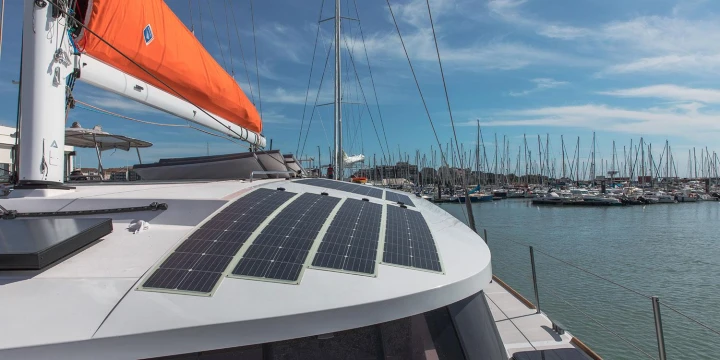
Solar power is one of three sources of energy on the boat. Solar panels charge the batteries even when the boat is anchored
Torqeedo: The beauty of self-sustainable life on a boat
In 2020, Torqeedo delivered its 100,000th marine electric drive system. One hundred thousand Torqeedo owners roam the world’s waters in harmony with nature. One of these pioneers, who goes by the name “Wolf”, is captain of the trimaran NOOS. He converted a high-tech Neel Trimaran to a self-sustainable living environment – with the help of Torqeedo.
You remodelled your trimaran to be self-sustainable. What does that involve on a boat?
We came up with ideas for tackling the most common difficulties of living on board a boat: shortages of energy, water, and food. This boat is fully electric, can generate and store renewable power, and we have systems to harvest water and grow food. It’s quite simple if you combine the right ideas.
Let’s talk about your energy production system first. How does it work?
I have three sources of energy on the boat: solar, wind, and hydrogeneration. While we’re sailing, the boat’s propeller generates electricity. And there are solar panels and wind turbines that charge the batteries even while we’re at anchor. So, if you sail three to four hours a day with some sun and wind, the batteries will always be fully charged. Torqeedo implemented the whole system – a 50 kWh electric engine and a six-battery bank with a total capacity of 60 kWh – which generates, stores and distributes the energy whenever I need it. The batteries are connected to the onboard electronics, and I also use them for hotel loads like cooking, lights, music, and my computer. There’s still a 300-litre fuel-powered generator for emergencies, but I don’t plan on ever using it. We’ll probably have to burn the fuel once a year, so it doesn’t deteriorate.
How did you make the onboard water and food sustainable?
I created my own water supply by collecting rain in a small gutter that goes around the boat, filtering it, and storing it in the water tanks. This way, I don’t even need a watermaker, which would consume a lot of energy. And after I’ve used the water, it’s separated into greywater from the sinks and showers and blackwater from the toilet. The greywater is easy to clean and recirculate. The blackwater goes into the compost, which is basically just a box full of wooden chips and worms, which in turn becomes the fertilizer for my onboard agriculture. It’s not rocket science.
What does electric mobility feel like?
Like freedom. I didn’t want to make any compromises on performance, security and comfort, and I didn’t have to. The boat can motor for more than ten hours – with no other source of energy. And it’s so liberating not to have to sail 200 miles to the next shoreline just to refuel. How many sailors would love to say “We’ll just generate our own energy”? If you handle it properly, it’s infinite. And it’s so silent. To be in that perfect spot, sailing in perfect conditions, and knowing you’ll have enough energy – it’s a perfect situation.
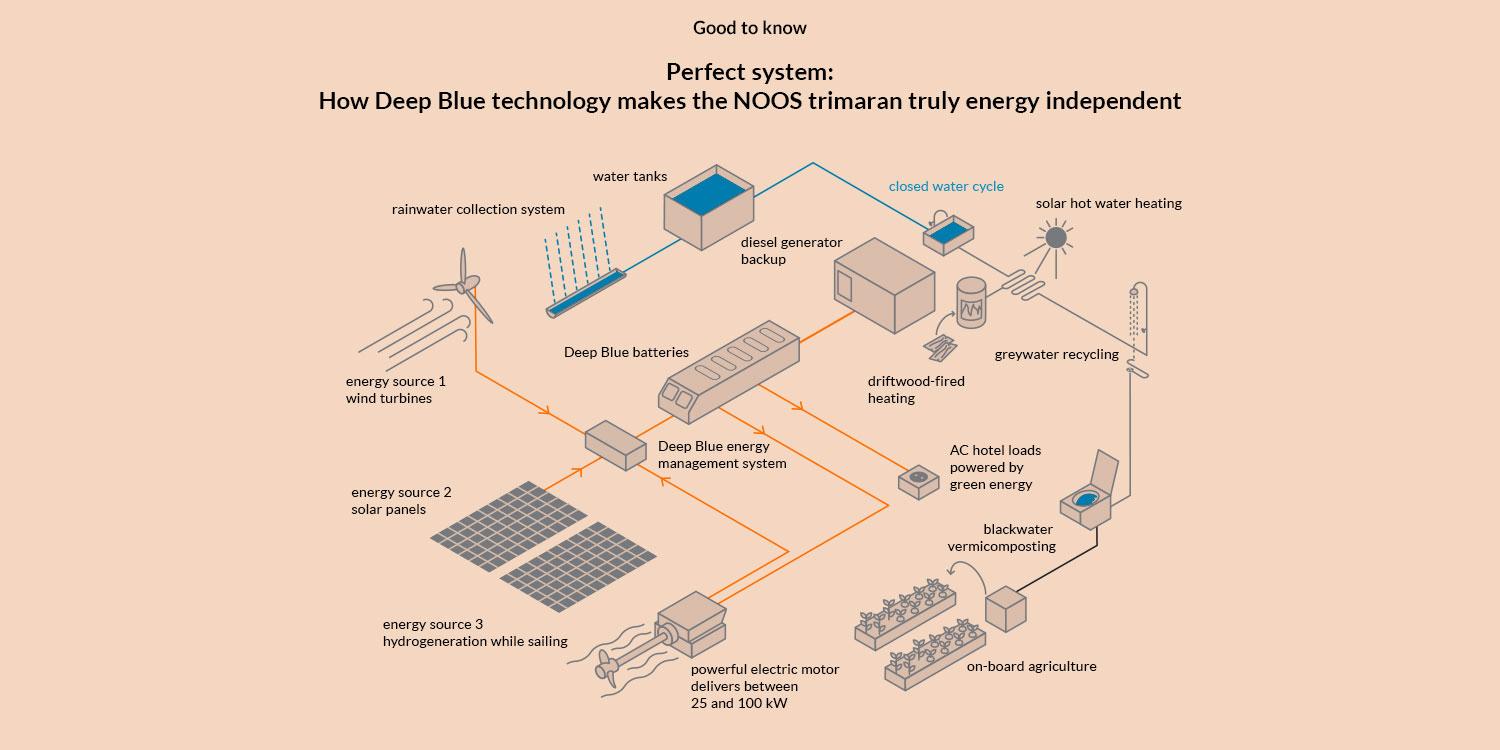
Why did you choose torqeedo for this project?
I wanted a company with experience I can depend on, because when you’re out there in the middle of the ocean you want to be sure that everything works. For me, Torqeedo has the most professional system from the electric motors and batteries to the control panels. Everything works together so smoothly. Torqeedo started working on electric engines when nobody understood why you would even want an electric engine. That was a long time ago, so they had a head start on other companies. It’s quite similar to what I want to achieve with NOOS: some people have visions and want to make them a reality years before others even understand why.
How did you come up with the idea for such an ambitious project?
I didn’t perceive it as ambitious, as most of the technologies are already available and quite simple. Mankind has acquired so much knowledge, but doesn’t use it properly. There are so many unused possibilities on a boat. Sun, wind, waves – it’s the most dynamic environment on earth. I wanted to take advantage of that and turn the boat into a space of ultimate freedom. And what’s more liberating than self-sustainability? I also wanted to use the project to draw attention to our environmental and socio-economic problems and demonstrate that there are already so many solutions out there, if we just dare to try them.
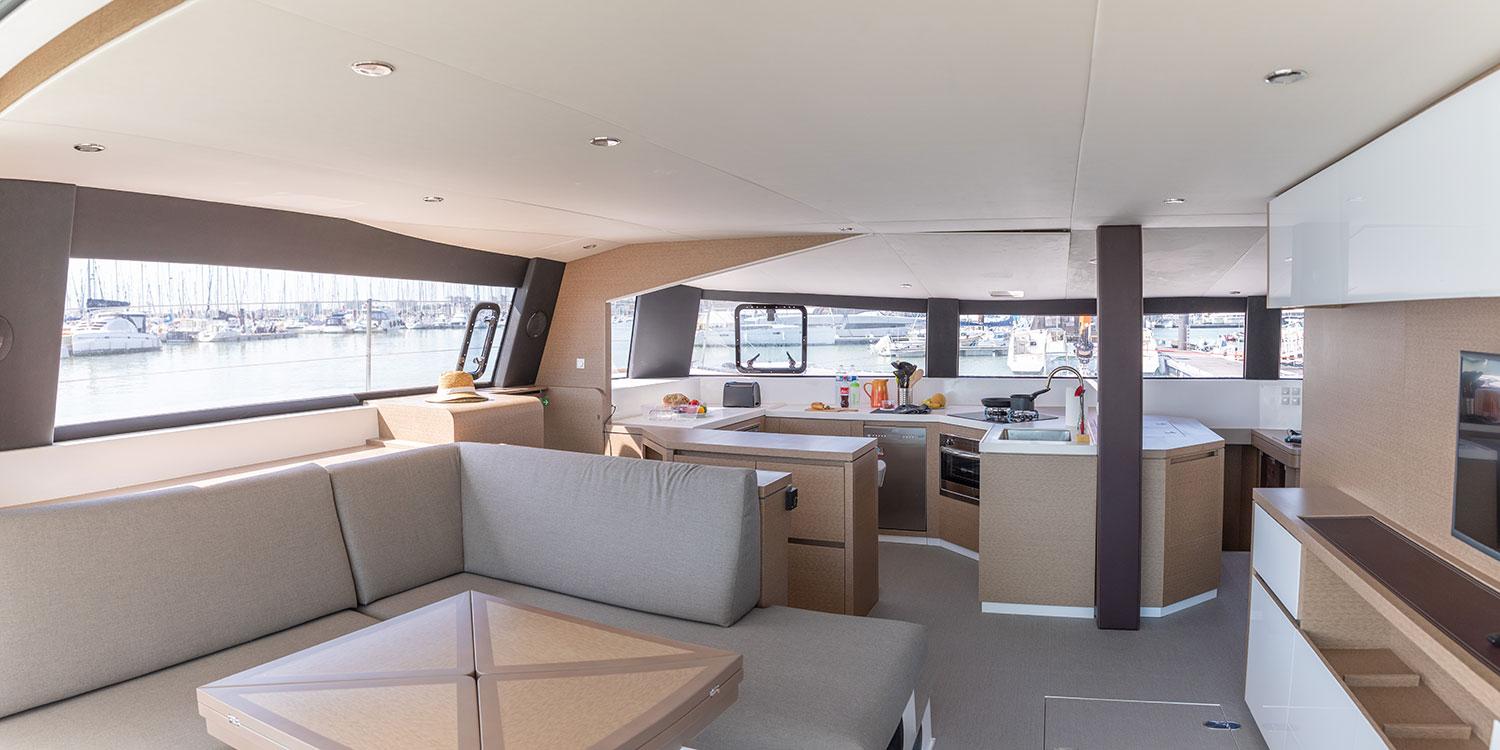
What about the economics of this switch?
People are afraid of the short-term costs of an electric drive system because it’s a little bit more expensive than a diesel installation. But each time I avoid refuelling, I have a return on investment. Then there’s a break-even point. But the cost involved is not just about money. The fossil fuel alternative would cause pollution, lead to health issues, and not give you the freedom an electric engine provides. So, if you factor all of these points into the equation, electric is way more profitable.
What’s your vision?
A project like NOOS shows climate-friendly solutions are not as complicated as we think. And if more and more people realize it’s no compromise to switch, more people will do it. I want boat owners and shipyards to say: “I hadn’t thought of that before, but it makes so much sense.” More and more people will then make the right choice and go electric. This is awareness changing. This is a turning point.
Video: https://youtu.be/SNB2g4N_kaE
Why is that turning point now?
There are no sacrifices or compromises to be made. Electric engines are reliable, powerful, and revolutionize the way you live on board. Electric power is now feasible on bigger boats where it wouldn’t have been possible just five years ago. Nowadays, the technology is mature enough to not only replace fossil fuel-burning engines, but actually outperform them. It’s happening with cars and now we’re there with boats. It will change the boating industry.
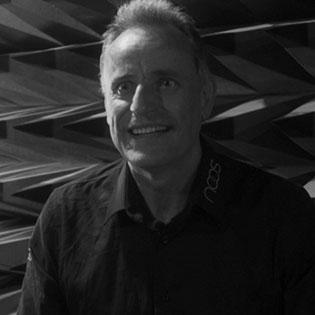
Wolf is the captain of the trimaran NOOS. With the help of Torqeedo he converted a high-tech Neel Trimaran into a self-sustainable living environment.



